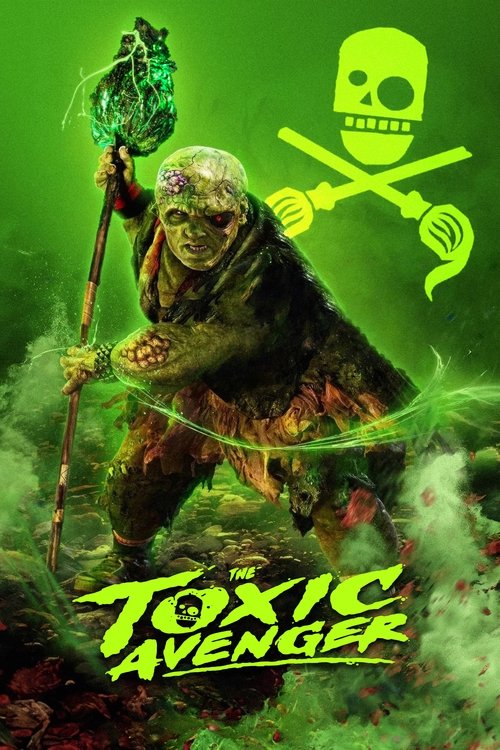
Ask Your Own Question
What is the plot?
An animated prologue opens on a Victorian street where a young married man watches his wife admire another man. She turns away from him; he becomes a solitary, lovelorn figure who dies and is interred among nameless graves. Decades later, in 1989, a teenage girl named Lisa Swallows habitually visits that same burial plot. She arranges flowers, whispers poems to the statue above the earth, and develops an almost devotional attachment to the lonely man carved in stone.
At home Lisa lives with her father, Dale, who has taken a new wife, Janet, and Janet's teenage daughter, Taffy. Dale tries to hold the family together; Janet treats Lisa with thinly veiled contempt, calls her a nuisance, and suggests sending her away to a reform school. Taffy offers a friendlier face, and the two begin their senior year at Brookview High together. Lisa's history is jagged: her mother was murdered at home with an axe, an event that traumatized her and rendered her mute for months until Dale's remarriage. To cope, Lisa writes poems and slips them under the nose of Michael Trent, the editor of the school paper, who occasionally compliments her verse.
One night Taffy drags Lisa to a party. Lisa, nervous and offered a cup by another girl named Tamara, downs a drink that makes her disoriented. At the party Doug, a classmate who will later prove predatory, finds Lisa drunk and guides her to a bedroom. He begins groping her and tries to force her hand toward his groin. Lisa shoves him away and flees into a storm, heart pounding. She walks to the cemetery and tells the statue of the Victorian man that she wishes she could be with him; her statement is hot with frustration and an undertow of wanting to die. As a bolt of green lightning lances the earth over the young man's grave, Lisa collapses and dreams of a romantic encounter with him.
The next day Janet scolds Lisa for shattering the bathroom mirror on her return from the party. Lisa goes to her shift at a local sewing shop where her employer treats her with disdain; Michael shows up with a jacket that needs repair, and Tamara enters with the sneer of someone who knows gossip and keeps it. The family attends a movie that night; Lisa stays at home. While alone she hears movement in the house and discovers the figure that will upend her life: a cadaverous, speechless man who drags himself through the back door. He cannot form words--he has no tongue--and he communicates in grunts and gestures. He brings Lisa her mother's rosary, which had been lost after the murder. Lisa begins to suspect that the lightning strike and her graveyard wish have animated the corpse of the Victorian man she worships.
Lisa hides the creature in her room and keeps him fed. Janet announces a trip to Milwaukee; while she primps, the creature creeps through the kitchen and drops a worm into Janet's plate. When Janet returns and catches Lisa at home she mocks Lisa's mother's death, escalates her plan to send Lisa away, and insults the girl in a way that strips any remaining patience. The creature reacts violently: he grabs a heavy sewing machine and strikes Janet in the head repeatedly, killing her. After the killing he severs Janet's ear and presents it to Lisa. Horrified, then transfixed by the practical possibility of helping him become whole, Lisa sews the ear onto his skull and places him in her broken tanning bed to rouse him with electricity. She covers Janet's body and, with trembling hands, helps the creature carry the corpse to the Victorian's grave.
At school, authorities arrive after Doug is reported missing. Tamara tells administrators she saw Lisa slip Doug a note inviting him into the woods, so the principal summons Lisa. She concocts explanations and lashes out at Tamara before being sent away. Lisa slips a note into Doug's locker arranging a clandestine meeting at the cemetery after school. That afternoon Lisa deliberately lures Doug into the green gloom between headstones, making him think she will reciprocate his advances. The creature bursts from behind a stone with an axe and lops off Doug's right hand. Doug bolts, wounded, but the creature hurls the axe and impales him; the blow kills Doug outright. They drag Doug's corpse to another open grave and inter him. Lisa removes Doug's detached hands and stitches them onto the creature. After each graft and burial the creature appears less decayed; flesh seems to fuse and his pallor recedes a little.
Lisa and the creature deepen their relationship. She confesses parts of her history--the fear that she will die unloved and the memory of her mother's murder--and the creature, who barely remembers before his reanimation, says that in his previous life he had shared one true relationship with a single woman. They find small intimacies: the creature fingers piano keys with a newly attached hand, and Lisa sings along, choosing the chorus of "Can't Fight This Feeling" while he plays. For a moment they inhabit a domestic strange peace.
News of Janet's absence and Doug's disappearance pushes Dale and Taffy into anxious confusion. Detectives canvass, and Lisa watches investigators comb the halls of her school. Police question students and faculty; witness statements and Tamara's account point to Lisa as having been with Doug, but she deflects and remains free. When Lisa learns Michael is not at school she walks toward his house to confront him about the poems he praised. On his doorstep she finds Michael in bed with Taffy. She is stunned and angry--not simply at a lover's slight but at what she reads as betrayal by someone who knew of her crush. Michael tells Lisa calmly that his feelings are not reciprocal; Taffy reels in shame. Lisa tries to leave; the creature, having abandoned the house it was hiding in, has taken to the streets in pursuit of Lisa.
On his way to fetch her, the creature encounters an older man who taunts him with homophobic slurs. The creature kills the man, takes his clothes and steals his car, then drives to Michael's house and arrives as the confrontation unfolds. He charges the bedroom with an axe and, in savage efficiency, chops off Michael's entire groin. Michael collapses and bleeds, screaming. Taffy shrieks and flees; the creature stands with the severed tissue in his hands. Later an officer catches up to Lisa and the creature near the cemetery. When she sees the severed penis in the creature's grasp she tries to intervene; the creature seizes her and throws the officer into an open grave. The film leaves the officer's fate ambiguous; she lands amid dirt and bones and her fate is not shown.
Back at the garage Lisa sews Michael's severed genitals onto the creature's body, explaining that in his former life the creature lost his penis long ago and that they need to consummate what she imagines will be their life together. The graft is crude and soaked with blood. When their work is done, the creature and Lisa kiss and move into the tanning bed. She asks to be electrified; driven by panic that their time is short and by a desire to be joined with him, Lisa begs the creature to power the bed at maximum. He flips the switch to the highest setting. Electricity surges through the tanning coils, arcing across the broken plastic, and sheets of flame erupt. Lisa is thrashing against the current as skin chars and the bed collapses into fire. The garage fills with smoke and flames; the creature cannot reach in without being burned, but he continues to pulse power. Dale arrives home to find the blaze and hears neighbors shouting; he watches through the garage window as the structure engulfs. Fire consumes the room where Lisa lies electrified. She dies in the conflagration; the last image of her alive is of her lips pressed to the creature's.
Authorities later hold a funeral for Lisa. Dale and Taffy stand at the graveside and lay flowers on her coffin. The headstone bears an epitaph that unnerves Taffy: the phrase "beloved wife" is chiseled into Lisa's stone. Dale and Taffy walk from Lisa's grave to Janet's burial plot; Taffy tells her stepfather she will honor both women as they stand over their respective mounds.
After the interment, a new sequence shows the creature animated and whole, moving through a tidy, domestic space with an ability to speak and read. He sits with a bandaged Lisa cradled on his lap; her body has been stitched together and wrapped in cloth. He opens a book of poems and reads aloud while Lisa listens, motionless but restored. The creature's voice is now clear; his face lacks the rut of rot from earlier, and his hands are limber. In the final moments of the film the camera lingers on the two of them together: he reads, she listens, and the graveyard statue from the opening watches over them in a different light, as if the lonely man's story has moved into a new chapter with these modern revenants. The screen cuts to black on that tableau, leaving only the image of the reanimated pair seated together, the man who once had no tongue now speaking softly while the woman he loves sits bandaged but alive against his chest.
What is the ending?
The 2025 film Frankenstein ends with a final confrontation between Victor Frankenstein and his Creature, where Victor dies but the Creature survives, leaving his fate ambiguous and open to interpretation.
Expanding on the ending scene by scene:
The climax unfolds in the Arctic, where Victor Frankenstein and the Creature have been locked in a relentless pursuit, each alternately hunter and hunted. Victor, driven by obsession and guilt, confronts the Creature in a desolate, icy landscape. The tension is palpable as they face each other, embodying the tragic consequences of Victor's hubris in creating life.
During their confrontation, Victor succumbs to exhaustion and the harsh environment, ultimately dying. His death marks the end of his torment and the collapse of his godlike ambitions. The Creature, witnessing Victor's demise, is left alone in the frozen wilderness. Rather than perishing, the Creature survives the encounter, his future uncertain but suggesting a continuation beyond Victor's death.
This ending closely follows Mary Shelley's original novel's tone, emphasizing the tragic undoing of both creator and creation. The film does not depict the Creature's death, instead hinting at his survival, which leaves viewers contemplating the enduring consequences of Victor's experiment and the Creature's search for identity and acceptance.
In terms of the main characters' fates at the story's end:
-
Victor Frankenstein dies in the Arctic, his life consumed by his obsessive quest to conquer death and create life.
-
The Creature survives the final confrontation, left alone in the wilderness, symbolizing the ongoing struggle of the being Victor brought to life.
Other key characters such as Elizabeth, William, and others do not participate directly in the final scenes and their fates are not central to the film's conclusion.
The ending scene is rich with visual and emotional detail: the bleak, frozen landscape mirrors the desolation of both men's souls; Victor's physical collapse contrasts with the Creature's ambiguous endurance; and the silence after Victor's death underscores the tragic cost of playing God. The film closes on this somber note, inviting reflection on the themes of creation, responsibility, and the human condition.
Who dies?
Yes, several characters die in the 2025 film Frankenstein, each under tragic and significant circumstances:
-
Elizabeth Lavenza
Elizabeth dies on her wedding night after a confrontation involving Victor Frankenstein and the Creature. The Creature and Elizabeth share a brief, emotional reunion, revealing a growing bond between them. However, Victor, consumed by jealousy and fear, fires a gun at the Creature. In the ensuing chaos, Elizabeth is accidentally shot and fatally wounded. She dies alone with the Creature by her side, confessing that she was never meant for this world. Her death is a pivotal moment that deepens the tragedy of the story and intensifies the conflict between Victor and the Creature. -
Victor Frankenstein
Victor dies in the Arctic after a prolonged pursuit by the Creature. He succumbs to his injuries and the harsh cold environment, ultimately dying in front of the Creature. In his final moments, Victor expresses regret for his actions and asks the Creature for forgiveness. This moment of remorse and reconciliation is unique to this adaptation, differing from the original novel. Victor's death marks the end of his obsessive quest to conquer death and highlights the tragic consequences of his hubris. -
Six Crew Members of the Expedition Ship
Early in the film, an expedition ship led by Captain Anderson becomes trapped in ice near the North Pole. The crew encounters the Creature, which attacks and kills six crew members with its superhuman strength and regenerative abilities. These deaths occur during the Creature's assault on the ship, emphasizing its dangerous and unstoppable nature.
These deaths are central to the film's narrative, underscoring themes of loss, regret, and the tragic fallout of Victor's scientific ambition. The Creature survives, left immortal and burdened by the suffering caused, while Victor and Elizabeth's deaths frame the emotional core of the story.
Is there a post-credit scene?
There is no specific information available regarding a post-credits scene for the 2025 movie titled "Frankenstein." The search results do not provide any details about such a scene in this particular film. Therefore, it cannot be confirmed whether there is a post-credits scene or what it might entail.
If you are looking for information on Guillermo del Toro's "Frankenstein," which is set to be released in 2025, there is currently no detailed information available about a post-credits scene. The film, starring Oscar Isaac as Victor Frankenstein and Jacob Elordi as The Creature, is highly anticipated, but specific details about its ending or any additional scenes have not been widely reported.
What is the nature of the relationship between Victor Frankenstein and Elizabeth Lavenza in the 2025 film?
In the 2025 film, Elizabeth Lavenza is engaged to Victor Frankenstein's younger brother William, but Victor harbors feelings for her. Elizabeth is also the niece of Henrich Harlander, the wealthy benefactor who funds Victor's experiments, which complicates the dynamics between the characters.
How is the Creature portrayed physically and emotionally in Guillermo del Toro's Frankenstein (2025)?
The Creature, played by Jacob Elordi, is depicted as a towering but delicate patchwork being, reminiscent of del Toro's Amphibian Man from The Shape of Water. Emotionally, he is portrayed as a lost soul and a newborn discovering life, with mannerisms and ticks that humanize him, making him a tragic figure rather than a mere monster.
What role does Henrich Harlander play in Victor Frankenstein's experiments?
Henrich Harlander, portrayed by Christoph Waltz, is a wealthy arms manufacturer who becomes Victor Frankenstein's mysterious benefactor. He offers Victor the resources to pursue his dark ambitions of reanimating the dead, thus enabling the creation of the Creature and influencing the course of Victor's experiments.
How does the film depict Victor Frankenstein's motivation for creating the Creature?
Victor's motivation is deeply personal, driven by the death of his mother, Claire Frankenstein, who died giving birth to his younger brother William. This loss sparks Victor's obsession with conquering death and mastering life, leading him down a dark path of scientific hubris and monstrous creation.
What is the significance of the scene where Victor assembles the Creature from battlefield corpses?
This scene is pivotal and visually striking, showing Victor methodically selecting and dismembering body parts from a battlefield to create his Creature. The grotesque imagery contrasts with Alexandre Desplat's whimsical score, highlighting the disturbing yet almost ritualistic nature of Victor's experiment and his descent into madness.
Is this family friendly?
The 2025 movie "Frankenstein" directed by Guillermo del Toro is not family-friendly due to its mature themes and content. Here are some aspects that might be objectionable or upsetting for children or sensitive viewers:
- Violence and Gore: The film is rated R for bloody violence and grisly images, which suggests that there are intense and potentially disturbing scenes involving violence and gore.
- Dark Atmosphere: The movie likely maintains a dark and intense atmosphere, typical of del Toro's style, which can be unsettling for some viewers.
- Emotional Intensity: The story explores themes of creation, rejection, and the consequences of playing God, which can evoke strong emotions and may be too intense for younger audiences.
- Mature Themes: The film delves into complex and mature themes that might not be suitable for children, including the ethical implications of scientific experimentation and the nature of humanity.
Overall, while the specific scenes are not detailed here to avoid spoilers, the combination of violence, dark themes, and emotional intensity makes this film more suitable for adult viewers.










































